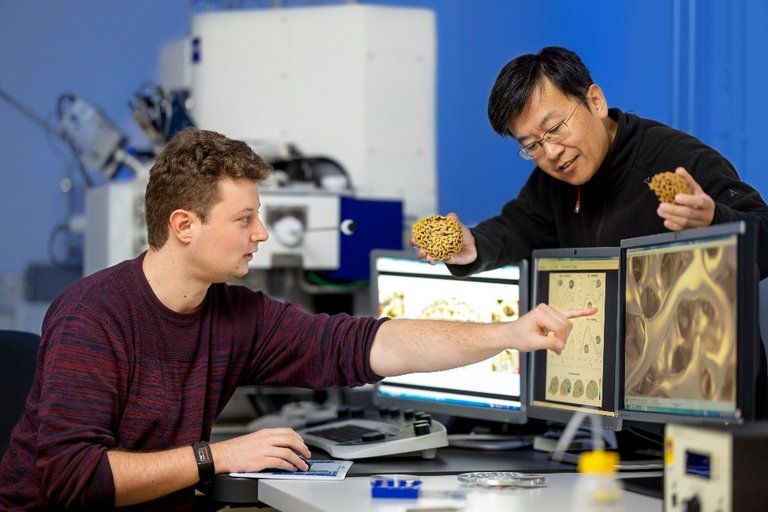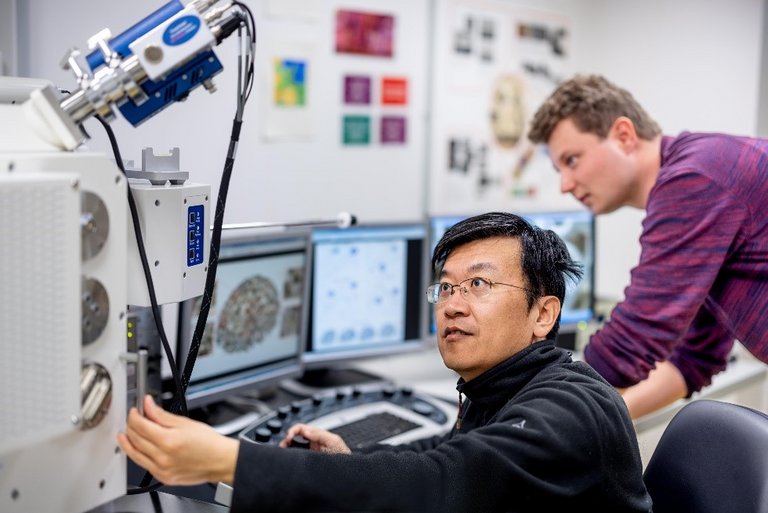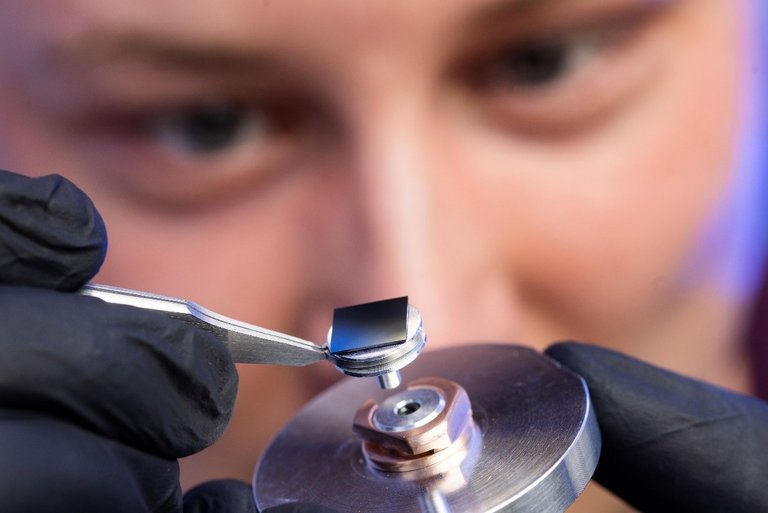In an interdisciplinary collaboration, materials scientists and physicists at TU Ilmenau have succeeded for the first time in studying the structure of porous gold nanoparticles, so-called gold nano-sponges, in detail and creating similar sponge geometries automatically on the computer. This opens up completely new possibilities for the cost-effective production of nanoantennas, which are the basis of numerous groundbreaking applications such as catalyticCO2 reduction, water splitting or highly sensitive sensors. The scientists have published the results of their research, which was carried out in collaboration with experimental physicists from Carl von Ossietzky University Oldenburg, in the journal Nature Communications Materials.

Similar to water or sound, light has the properties of waves. Therefore, even at high magnification, only objects that are significantly smaller than the wavelength of light are visible with a microscope. Nanoantennas, i.e., tiny optical antennas that usually measure less than a hundred nanometers and are thus about a thousand times narrower than a human hair, make it possible to overcome this Abbe diffraction limit: Therefore, even at high magnification, a microscope can only resolve structures that are roughly the same size as the wavelength of light. The ultra-strong light intensity that results enables breakthrough applications such as plasmonic water splitting to produce hydrogen. At present, however, complex and expensive production processes are required to manufacture such nanoantennas.
Scientists from the Groups of Materials for Electrical Engineering and Electronics (Hauke-Lars Honig, Dong Wang, Prof. Peter Schaaf) and Theoretical Physics I (Malte Grunert, Sebastian Bohm, Prof. Erich Runge) at TU Ilmenau have now found a resource-efficient and thus highly attractive alternative for the production of gold nanoantennas. For the first time, they have studied porous gold nanoparticles, so-called gold nanosponges, and their internal structure in detail. Based on these measurements, they have created a model that can be used to automatically create similar sponge geometries on a computer. This allows for an even deeper exploration of the relationship between structure and properties.
The experimental measurements took place at the Centre of Micro- and Nanotechnologies (ZMN) at TU Ilmenau. Using focused ion beam tomography (FIB), the scientists first cut individual sponges into many slices, each only a few nanometers thick. They then scanned these slices using electron microscopy and assembled the resulting images into a 3D structure. "In this way, we were able to take a detailed look inside a nanosponge for the first time," explains Malte Grunert, a research associate at the Department of Theoretical Physics I. "We were able to see the structure of a nanosponge in detail," he says.
Since each nanosponge is unique, the scientists had to map dozens of sponges in this way. In previous theoretical work, the scientists had already used simple models to represent the geometry of nanosponges, but it remained unclear to what extent these results could be applied to real nanosponges.
"This is how the main idea of our work emerged," explains Malte Grunert: "Can we develop a more sophisticated algorithm for geometry generation that is aligned with the experimental results? Ideally, we thought, we could use it to generate an entire library of hundreds of sponges on the computer to gain statistical confidence in our simulations."
Inspired by physics
Nanoporous gold is formed by so-called "spinodal segregation". Spinodal segregation in other systems has already been successfully modeled in the past using the so-called phase field method. "Therefore, it was only logical to test this physics-inspired method on our sponges as well," says Malte Grunert. "Surprisingly, already our first experiments resulted in 'spongy' looking particles, which motivated us to further refine our method. For each iteration of the algorithm, we calculated the optical properties and compared them to the experiment. Because our goal was to create similar sponge geometries, the optical properties should also be similar."
However, with each challenge the scientists solved, a new one emerged: "One of the most critical aspects was to generate an accurate surface, as it is extremely important for the optical properties of the nanosponges. However, we finally managed to find a reliable and simple, yet powerful algorithm to generate the geometry."
This brought the scientists back to their original question: can a link be established between the structure of the sponges and their exciting optical properties? "With our new tool, this is indeed possible," explains Malte Grunert. Together with his colleagues, he has determined a number of global morphological properties such as the number of holes and the gold content in the sponges: "If the sponges generated with our algorithm match those of the experimentally measured sponges in these properties, similar optical properties result." Finally, through the FIB measurements, the scientists discovered that the nanosponges are actually anisotropic, meaning they are not uniformly "thick. "Instead, they are thicker at the bottom, an effect we attribute to the substrate on which they rest during fabrication."
Simple but powerful algorithm
Based on these discoveries, the scientists also managed to implement this non-uniform thickness into the geometry generation algorithm, allowing for any conceivable structural anisotropy. Such effects are thought to occur, for example, in plasmodic catalysis with gold nanosponge-based hybrid materials, an area of research that is still in its infancy.
With their novel powerful algorithm, scientists are now beginning to uncover the connection between the sponges' disordered structure and their intriguing properties, for example, so-called nonlinear optical effects and plasmoniccatalysis. In addition, the methods can also be used to study other porous materials. Therefore, the scientists have made the algorithms and code base they developed publicly available.
The research was part of the interdisciplinary DFG project "Tailored Disorder" between materials scientists and theoretical physicists from TU Ilmenau and experimental physicists from the University of Oldenburg.
The scientists have described their investigations in detail in an article in Nature Communications Materials: https://www.nature.com/articles/s43246-023-00346-7



